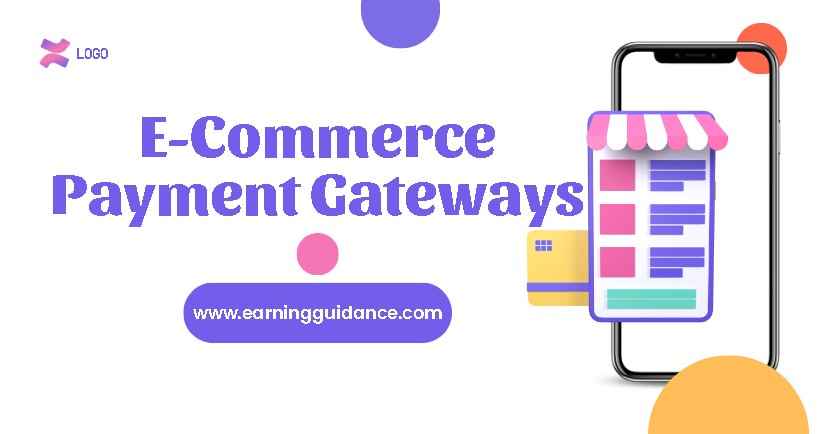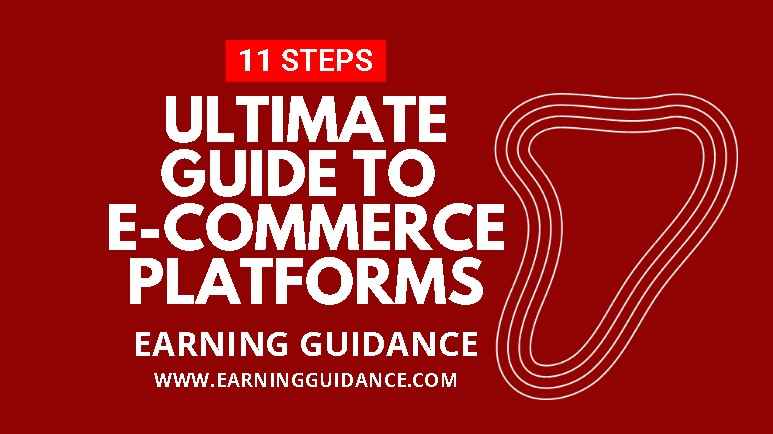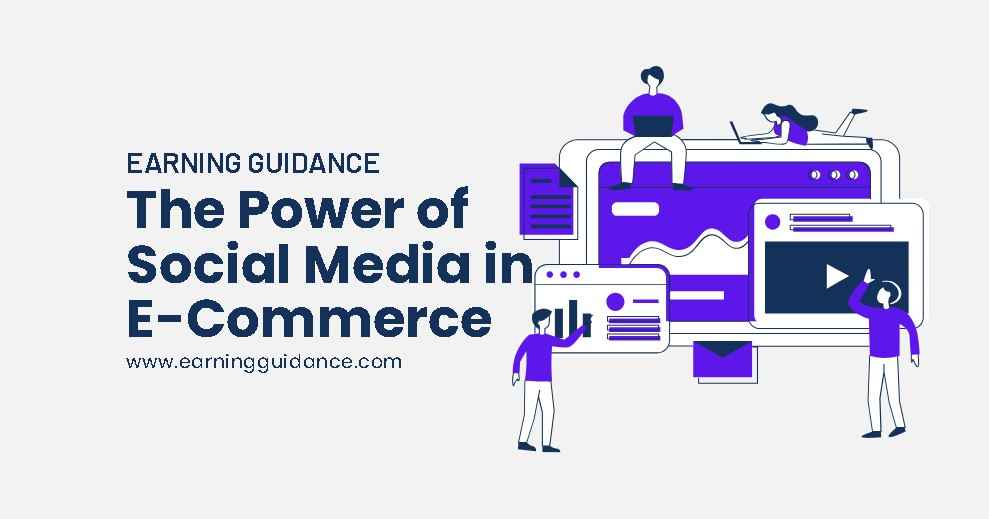Table Of Contents
- 1 1. Introduction
- 2 2. Understanding E-Commerce Payment Gateways
- 3 3. Factors to Consider When Choosing a Payment Gateway
- 4 4. Top E-Commerce Payment Gateways in the Market
- 4.0.1 A. Payment gateway 1: Features, benefits, and pricing
- 4.0.2 B. Payment gateway 2: Features, benefits, and pricing
- 4.0.3 C. Payment gateway 3: Features, benefits, and pricing
- 4.0.4 D. Comparison of the top payment gateways based on key factors
- 4.0.5 E. Considerations for choosing the best payment gateway for specific business needs
- 5 5. Setting Up and Integrating a Payment Gateway
- 6 6. Ensuring Payment Security and Compliance
- 7 7. Optimizing Conversion Rates with Payment Gateways
- 8 8. Managing Disputes and Chargebacks
- 9 9. Integrating Additional Features and Services
- 10 FAQs
- 10.1 1. Which is the best payment gateway for eCommerce website?
- 10.2 2. What payment gateway works in Pakistan?
- 10.3 3. Which type of e-commerce is gateway?
- 10.4 4. What is eCommerce payment example?
- 10.5 5. Which is the most successful e-commerce site?
- 10.6 6. Is Visa a payment gateway?
- 10.7 7. Which country is no 1 in e-commerce?
- 10.8 8. Who is the king of e-commerce?
- 10.9 9. Which type of e-commerce is best?
1. Introduction
A. Definition and importance of e-commerce payment gateways
E-commerce payment gateways are essential components of online businesses that enable secure transactions by acting as intermediaries between merchants and customers. They facilitate the transfer of funds from customers’ accounts to merchants, ensuring a seamless and secure payment process. Choosing the right payment gateway is crucial for e-commerce businesses as it directly impacts customer experience and transaction security.
B. Overview of how payment gateways facilitate online transactions
Payment gateways play a pivotal role in the e-commerce ecosystem. They provide a secure channel for transmitting sensitive payment information between customers, merchants, and financial institutions. By encrypting data and utilizing fraud prevention measures, payment gateways ensure that transactions occur smoothly and securely. You can check some extra details at Shopify’s Blog.
Creating a Winning E-Commerce Marketing Plan: Step-by-Step Guide
C. Significance of choosing the right payment gateway for an e-commerce business
Selecting an appropriate payment gateway is a strategic decision that impacts an e-commerce business’s success. The right payment gateway should align with the business’s requirements, provide a seamless user experience, offer robust security measures, and integrate seamlessly with the chosen e-commerce platform. Making an informed decision in choosing a payment gateway can enhance customer trust, optimize conversion rates, and streamline the payment process.
2. Understanding E-Commerce Payment Gateways

A. Explanation of how e-commerce payment gateways work
E-commerce payment gateways act as intermediaries that facilitate the secure transfer of payment information from customers to merchants. The process involves the following steps:
- Customer selects the desired product or service and proceeds to checkout.
- Payment gateway encrypts the transaction data, ensuring its security.
- Encrypted data is transmitted to the payment processor or acquiring bank for authorization.
- Authorization request is sent to the customer’s bank to confirm the availability of funds.
- Customer’s bank sends an approval or decline response to the payment gateway.
- Payment gateway communicates the response to the merchant and customer, completing the transaction.
B. Different types of payment gateways available
There are various types of payment gateways available, each with its own features and functionalities. Some common types include:
- Hosted Payment Gateways: Customers are redirected to the payment gateway’s platform to complete the transaction.
- Self-Hosted Payment Gateways: Payment forms are hosted on the merchant’s website, ensuring a consistent user experience.
- API-Integrated Payment Gateways: Allows merchants to fully customize the payment process by integrating payment gateway APIs into their website.
- Mobile Payment Gateways: Specifically designed for mobile commerce, enabling seamless transactions on mobile devices.
C. Overview of key features and functionalities of payment gateways
Payment gateways offer a range of features to enhance the payment experience and security. Some common features include:
- Secure payment processing with encryption and tokenization.
- Multi-currency support to cater to international customers.
- Integration with popular e-commerce platforms.
- Recurring billing options for subscription-based businesses.
- Fraud detection and prevention measures.
- Reporting and analytics tools to track transaction data.
Mastering E-Commerce SEO: Boost Your Store’s Visibility on Search Engines
3. Factors to Consider When Choosing a Payment Gateway
A. Security and fraud prevention measures
When evaluating payment gateways, security should be a top priority. Consider the following factors:
- Payment gateway’s compliance with Payment Card Industry Data Security Standard (PCI DSS).
- Tokenization and encryption of sensitive payment data.
- Fraud detection and prevention mechanisms, such as address verification and CVV checks.
See Some Extra details about it at Paypal’s Blog.
B. Accepted payment methods and currencies
Payment gateways should support a wide range of payment methods to cater to customer preferences. Consider the following:
- Acceptance of major credit cards (Visa, Mastercard, American Express, etc.).
- Compatibility with digital wallets (PayPal, Apple Pay, Google Pay, etc.).
- Support for alternative payment methods (bank transfers, cryptocurrencies, etc.).
- Ability to process payments in different currencies for international transactions.
C. Integration options with e-commerce platforms
Seamless integration between the chosen payment gateway and the e-commerce platform is crucial. Consider the following:
- Native integration options provided by the payment gateway for popular e-commerce platforms.
- Availability of plugins or extensions to facilitate integration with the chosen platform.
- Developer-friendly APIs and documentation for custom integration.
D. Transaction fees and pricing structure
Evaluate the transaction fees and pricing structure associated with different payment gateways. Consider the following:
- Transaction fees, including per-transaction fees and percentage-based fees.
- Monthly or annual subscription fees.
- Additional charges for specific features or services.
- Consider the overall cost implications based on the business’s transaction volume and value.
E. Customer support and reliability
Reliable customer support is essential for resolving payment-related issues promptly. Consider the following:
- Availability of customer support channels (email, phone, live chat).
- Responsiveness and reputation of the payment gateway’s customer support team.
- Availability of technical resources, documentation, and knowledge base for troubleshooting.
F. Scalability and growth potential
Consider the scalability and growth potential offered by different payment gateways. Evaluate the following:
- Ability to handle increasing transaction volumes without performance degradation.
- Flexibility to accommodate business expansion into new markets or product offerings.
- Availability of additional features and services to support business growth.
E-Commerce Trends to Watch Out for in 2023
4. Top E-Commerce Payment Gateways in the Market
A. Payment gateway 1: Features, benefits, and pricing
Provide a detailed overview of one of the top e-commerce payment gateways in the market. Include information about its features, benefits, pricing structure, and any notable strengths or weaknesses.
B. Payment gateway 2: Features, benefits, and pricing
Repeat the same structure as in the previous section, but focus on another top e-commerce payment gateway. Provide a comprehensive overview of its features, benefits, pricing, and any noteworthy aspects.
C. Payment gateway 3: Features, benefits, and pricing
Repeat the structure from the previous sections, highlighting a different top e-commerce payment gateway. Include information about its features, benefits, pricing structure, and any significant advantages or disadvantages.
D. Comparison of the top payment gateways based on key factors
Compare the previously discussed payment gateways based on essential factors such as security, payment methods, integration options, transaction fees, customer support, scalability, and any other relevant criteria. Provide a comprehensive analysis to help readers make an informed decision.
E. Considerations for choosing the best payment gateway for specific business needs
Offer guidance on how to choose the most suitable payment gateway for specific business requirements. Discuss factors such as the business model, target audience, transaction volume, international expansion plans, and any unique needs that may influence the selection process. Provide actionable tips and considerations to assist readers in making an optimal choice.
How to Drive Massive Traffic to Your E-Commerce Store: Proven Strategies
5. Setting Up and Integrating a Payment Gateway
A. Step-by-step guide to setting up a payment gateway account
Provide a detailed step-by-step guide on how to set up a payment gateway account. Include information on account registration, documentation requirements, verification processes, and any other necessary steps. Use bullet points or numbered lists for clarity.
B. Integration process with popular e-commerce platforms
Discuss the integration process between e-commerce platforms and payment gateways. Provide instructions, tips, and recommendations for integrating the chosen payment gateway with popular e-commerce platforms such as Shopify, WooCommerce, Magento, or others. Highlight any specific considerations or plugins/extensions that may be useful.
C. Customization options for checkout pages and user experience
Explain the customization options available for checkout pages to ensure a seamless and branded user experience. Discuss features such as custom branding, personalized payment forms, and the ability to match the overall look and feel of the e-commerce website. Highlight the importance of a user-friendly and intuitive checkout process.
6. Ensuring Payment Security and Compliance
A. Importance of PCI DSS compliance for e-commerce businesses
Emphasize the significance of Payment Card Industry Data Security Standard (PCI DSS) compliance for e-commerce businesses. Explain the requirements and implications of compliance and highlight the importance of protecting customer payment data. Provide resources or external links for readers to further explore PCI DSS compliance.
B. Best practices for securing customer payment data
Offer a set of best practices for securing customer payment data. Discuss measures such as implementing SSL certificates, adhering to encryption standards, utilizing tokenization, conducting regular security audits, and staying updated with security patches. Provide actionable advice to help businesses safeguard sensitive information.
C. SSL certificates and encryption for secure transactions
Explain the role of SSL certificates and encryption in ensuring secure transactions. Describe the purpose of SSL certificates, their impact on trust and security, and their role in encrypting data during transmission. Encourage readers to obtain and install SSL certificates to establish secure connections between their websites and customers’ browsers.
Ultimate Guide to E-Commerce Platforms – 11 Steps
7. Optimizing Conversion Rates with Payment Gateways
A. Streamlining the checkout process for a seamless user experience
Discuss strategies for streamlining the checkout process to enhance the user experience and improve conversion rates. Highlight the importance of a simplified and intuitive checkout flow, with minimal form fields and distractions. Mention techniques such as guest checkout, progress indicators, and one-click payments.
B. Accepting multiple payment methods to cater to customer preferences
Emphasize the importance of accepting multiple payment methods to accommodate customer preferences and increase conversion rates. Discuss the benefits of offering various options such as credit cards, digital wallets, and alternative payment methods. Highlight the need for compatibility with popular payment methods in different regions.
C. Reducing cart abandonment with optimized payment flows
Explain how optimized payment flows can help reduce cart abandonment rates. Discuss techniques such as displaying clear pricing information upfront, minimizing unexpected additional charges, providing order summaries, and offering reassurance through secure payment badges. Highlight the importance of a frictionless and trustworthy payment experience.
8. Managing Disputes and Chargebacks
A. Understanding common disputes and chargeback scenarios
Provide an overview of common disputes and chargeback scenarios that e-commerce businesses may encounter. Explain the reasons behind disputes and chargebacks, such as fraud, product issues, or customer dissatisfaction. Offer examples and insights to help readers understand and identify potential disputes.
B. Strategies for preventing and resolving disputes
Share effective strategies for preventing and resolving disputes before they escalate into chargebacks. Discuss proactive measures such as clear refund and return policies, timely customer communication, and dispute resolution mechanisms. Provide tips for handling customer inquiries and complaints to minimize the risk of disputes.
C. Working with the payment gateway’s dispute resolution process
Explain how e-commerce businesses can work with the dispute resolution process provided by the chosen payment gateway. Describe the steps involved, the documentation required, and the timeline for resolution. Highlight the importance of maintaining clear communication with the payment gateway throughout the process.
9. Integrating Additional Features and Services
A. Recurring billing and subscription management
Discuss the benefits of integrating recurring billing and subscription management features with the chosen payment gateway. Explain how businesses can leverage these features to offer subscription-based products or services, manage recurring payments, and enhance customer retention.
B. Multi-currency support and international expansion
Highlight the importance of multi-currency support for businesses targeting international markets. Discuss how the payment gateway’s ability to process transactions in different currencies can facilitate global expansion. Provide information on currency conversion rates, settlement processes, and considerations for businesses operating in multiple countries.
C. Fraud detection and prevention tools
Discuss the value of integrating fraud detection and prevention tools provided by the payment gateway. Explain how these tools can help businesses identify and mitigate fraudulent activities, protect against chargebacks, and maintain a secure payment environment. Mention features such as fraud scoring, address verification, and risk management systems.
FAQs
1. Which is the best payment gateway for eCommerce website?
The best payment gateway for an eCommerce website depends on various factors such as business requirements, target audience, and specific needs. Some popular options include PayPal, Stripe, and Square.
2. What payment gateway works in Pakistan?
In Pakistan, some of the payment gateways that work include JazzCash, EasyPaisa, Payoneer, and 2Checkout.
3. Which type of e-commerce is gateway?
A payment gateway is not a type of e-commerce, but rather a technology or service that enables online transactions by securely authorizing and processing payments between buyers and sellers.
4. What is eCommerce payment example?
An eCommerce payment example could be a customer purchasing a product from an online store and making payment using their credit card or digital wallet through the payment gateway.
5. Which is the most successful e-commerce site?
The most successful e-commerce sites vary depending on factors such as revenue, customer base, and market reach. Examples of highly successful e-commerce sites include Amazon, Alibaba, and eBay.
6. Is Visa a payment gateway?
Visa is not a payment gateway but rather a financial services corporation that provides credit and debit card services. However, Visa does offer Visa Checkout, which is a digital wallet that can be used as a payment method on various e-commerce websites.
7. Which country is no 1 in e-commerce?
The country that ranks number one in e-commerce can vary based on different metrics and timeframes. Currently, China, the United States, and the United Kingdom are among the leading countries in e-commerce.
8. Who is the king of e-commerce?
There is no singular “king” of e-commerce as the industry is dynamic and constantly evolving. However, companies like Amazon, Alibaba, and eBay have had significant influence and success in the e-commerce sector.
9. Which type of e-commerce is best?
The best type of e-commerce depends on factors such as the nature of the business, target audience, and product/service offerings. Common types include B2C (Business-to-Consumer), B2B (Business-to-Business), and C2C (Consumer-to-Consumer) e-commerce.













Wow! Your blog post blew me away! Your ability to dissect complex topics and present them in a relatable, no-nonsense way is simply genius. Allow me to share with you and your audience about my first-hand experience of this ultimate Giant Killer! =>> (https://bit.ly/ai-biz-builder).